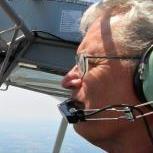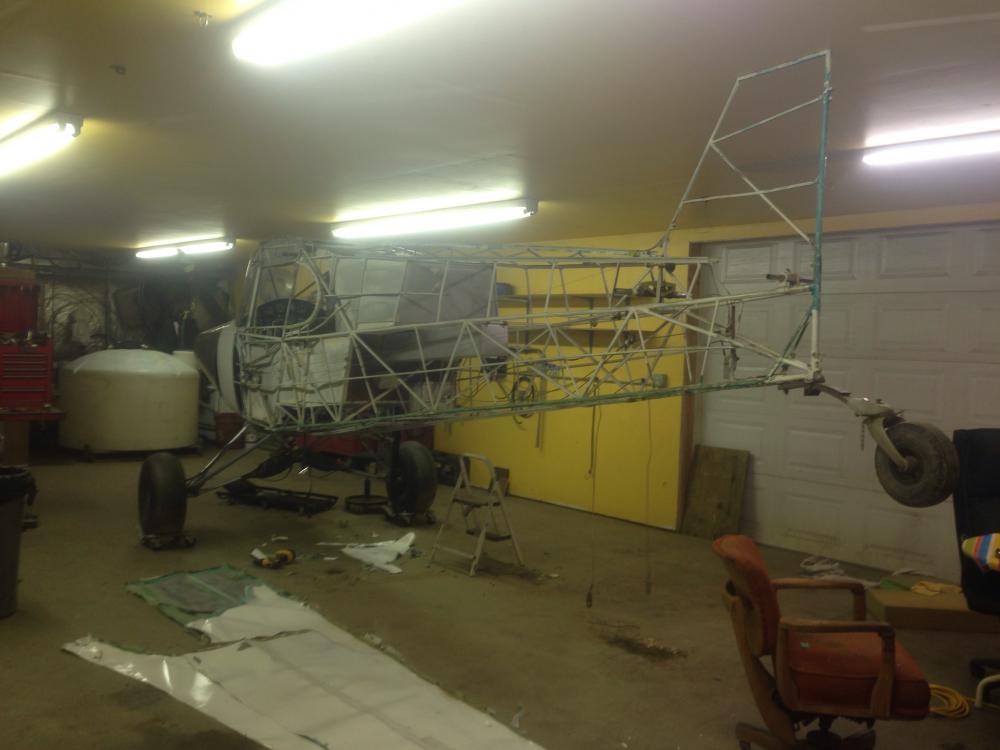-
Content count
104 -
Joined
-
Last visited
Posts posted by Geoffrey Thorpe
-
-
. A company in Canada still provides parts.
I do believe that they are now out of business. But not many parts would be that hard to fabricate on your own. I got an email from a guy who was planning to start selling kits again - but nothing since.
I have one - more room as Mr. Guitar said. With a Rotax 912, mine is supposed to weigh 710 empty (don't know what kind of scales the previous owner used). Gross is listed by the kit manuf. at 1300 land (1400 floats iirc).
Takeoff / landing is real short - but is sensitive to weight. I would argue that the speeds advertised came from the marketing department, not flight test. Has a metric buttload of adverse yaw - but just use your feet. Easy to fly, but it likes to bounce on landing - could be me.
Some videos of odds and ends: https://www.youtube.com/playlist?list=PL3ea3YrO-K5hlHDwFTh4KCwlKzn8BrDQE
1 person likes this -
-
-
Just made an Aluminum tank for my Merlin GT - I used a bead roller to to make 4 ribs on the top/bottom skins and put in a baffle - way - way - way stiffer than the originals even though I went from 8 1/2 to 12 1/2 gallons. The skins had to be forced to sit flat for welding, but...
I made my own patterns based on the old tank and wing root profile (but won't work for an Avid)
-
-
Some consider step one to be to use a hair dryer (not a heat gun) when the sticker is removed - if you missed that step, try it on the adhesive in conjunction with your solvent of choice.
-
I want to soften the Hysol but the ruin the temper of the spars.
Aluminum is annealed at temperatures on the order of 650F - wouldn't want to get that hot
Fabric is shrunk at around 350F - should be safe.
-
What happens is someone has an accident after installing one or more parts? Perhaps the engine fails because of some internal fault...
I'm not seeing that parting it out protects you from liability.
-
well i started the removale of the fabric off the PA12 it had the waterborn stewards system and replacing it with Oratex6000. So far so good except try to get all the green Ekobond glue off but i did find the trick. Hahhaaaaa
Fun, fun, fun! But I gotta axe; how did you do the magic levitating tail trick?
1 person likes this -
A generic hardware store heat gun is going to be hard to control - The Polyfiber people go so far as to declare that the STC (for a type certificated aircraft) would be void if you use one. Oretex has a digitally controlled gun (as mentioned above) that they recommend for their fabric - I wouldn't have any qualms about using that.
Alternately, using a regular iron with some parchment paper on the fabric will work, but it will damage the finish somewhat (assuming polytone) - I've done this after repair work that required cutting a fairly large flap.
But... That be a big wrinkle - where did it come from? Are you sure there isn't some damage underneath? That would worry me more than the wrinkle.
-
For what it's worth...
At one time, the FAA classified installing wings on gliders as preventative maintenance. In '87 this was REMOVED from part 43,
https://static1.squarespace.com/sta...2fe131f8fb14f4b7/1464113792897/05+06+1987.pdf
Also added words in glider pre-flight (part 61) about training to install wings that have since evaporated and been replaced by just "preflight operations" near as I can tell.So, while one can argue that it doen't matter for an Avid (E-AB) for an S-LSA the above reference indicating that installing wings is normal operation per the FAA (at least for gliders) might be a handy reference if you have to deal with a pain in the butt inspector.
-
To me, Folding wings is like Opening doors - anything built to hinge is designed to be moveable and does not require any other action.
 EDMO
EDMOYea - no argument here. The only issue would be when you run into some paperwork "expert" as the original poster...
Then it comes down to "is it maintenance" or "normal operation". Putting a paragraph or two in a manual under a section "preflight checklist" gives you something to point at when someone wants to see paperwork.
The other argument is that since part 43 does not apply (per 43.1) then it doesn't matter if it's maintenance (as it is on my ride), and the op-lims only require that you log the condition inspection then you just do it and go on your way.
-
Maintenance: 43.1 B applicability - part 43 (which requires A&P, allows minor maintenance, etc.) does not apply.
Condition inspection: What it says in the operating limitations. Probably should have written the repairman cert number.
Folding wings without log book entry - don't have a source for that, but obviously common with many models of aircraft. Is it covered in the aircraft "manual"?
-
I bought my ride without a transponder and flew it into an airport under the class B ring of death (ONZ) - phone call to the tower ahead of time (told to stay clear of Bravo), call up on the radio when I got close to the 30 nm ring (They didn't see me on radar at that point). After installing the transponder (and leaving it off), use the same process to get out of the B ring and into a C airport for the initial check. But since then, I have found a couple of "trunkers" who will come out and do the checks. Leave the hangar unlocked, log book and check on the glare shield and magic happens while I am at work :-)
Dunno what would be required for the first inspection though.
-
FWIW, I find a drywall lift to be handy when single handed wing removing / installing on my Merlin GT. I do have to get someone to help get it on/off the lift, but that's just a grab someone for 30 seconds.
Without the hoist, my daughter can hold the wingtip while I undo things at the root.
-
The Stitts manual has directions on testing polyfiber fabric. They say you can use the Maul tester if a problem is suspected, but the real test is to cut a strip, strip the paint, then hang a weight from it. The strength shouldn't be lower than the equivalent cotton. I don't recall if there was a table of the different fabrics and expected strength - and the book is at the airport.
-
-
Thanks Ed. However Part 43 doesnt apply to experimentals. I can probably use a similar statement per:
Your operating limitations will specify that you do the inspection as per appendix D of part 43.
-
Will the open behind the panel set up work with an encoder?
Your encoder will match the altimeter (which is what you want).
-
My brakes work great just was wondering about a rebuild kit down the line .
-
FWIW - a solution of Drano crystals (Sodium Hydroxide) and water will dissolve aluminum deposited on steel cylinder liners. And, modeling clay (Plasticine) will plug holes and keep the Drano from the aluminum casting.
1 person likes this -
-
I can't remember why it may be important in some situations to have the "english proficient" on there. Perhaps when flying to Canada??? (Like the important and never asked for radio operator licenses for pilot and airplane.) In any event it meant sending for a new certificate @ $2 when it first became so important.
Mark, I am trying to understand why your cert is marked that way -
Because he has a certificate that was issued after the FAA started marking all new certificates as "English proficient" on February 11, 2008
1 person likes this -

![20180528_135803[1].jpg](http://avidfoxflyers.com/uploads/monthly_2018_05/5b0c4fc53dde7_20180528_1358031.thumb.jpg.46f3bef52d6eda4c62d04ceaabbf2a29.jpg)

Matco break seal reference
in Avidfoxflyers General Hangar
Posted
No.The pressure is the same everywhere in the system - if you have two calipers, you have to physically move the master cylinder twice as far to get the same brake puck travel, but for any pressure on the pedal you get the same pressure in the two calipers that you would have gotten with one.